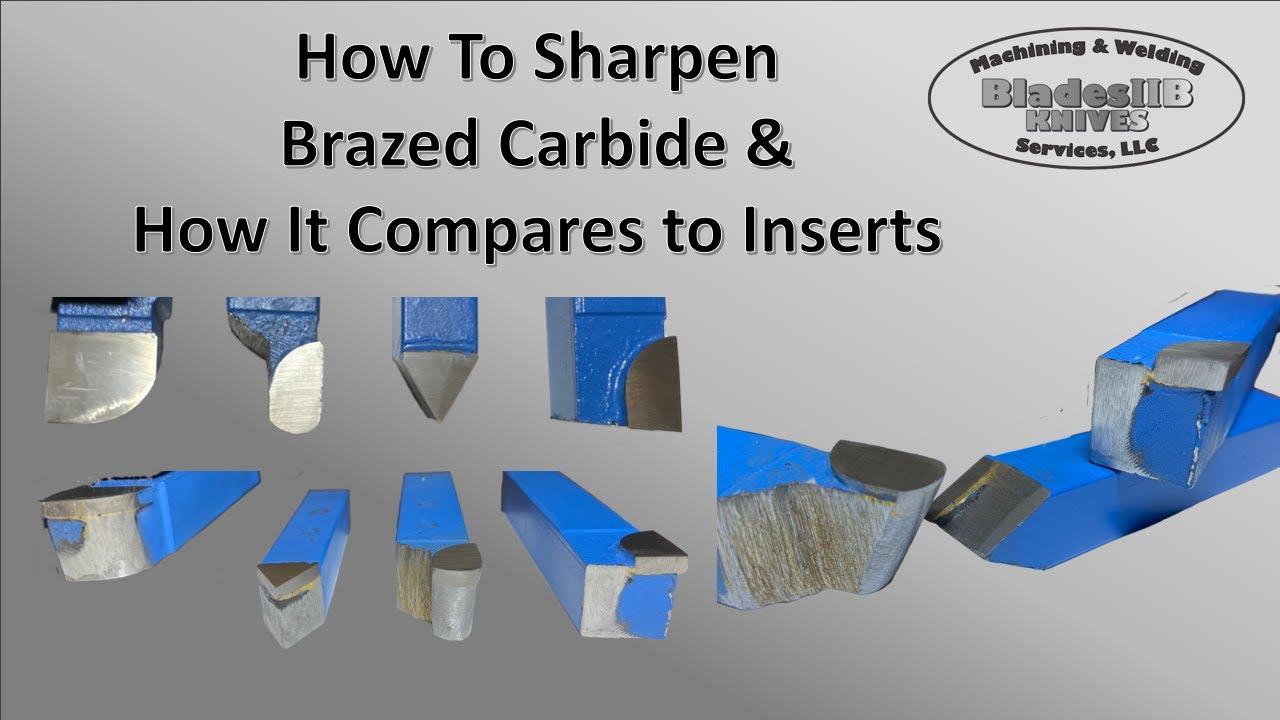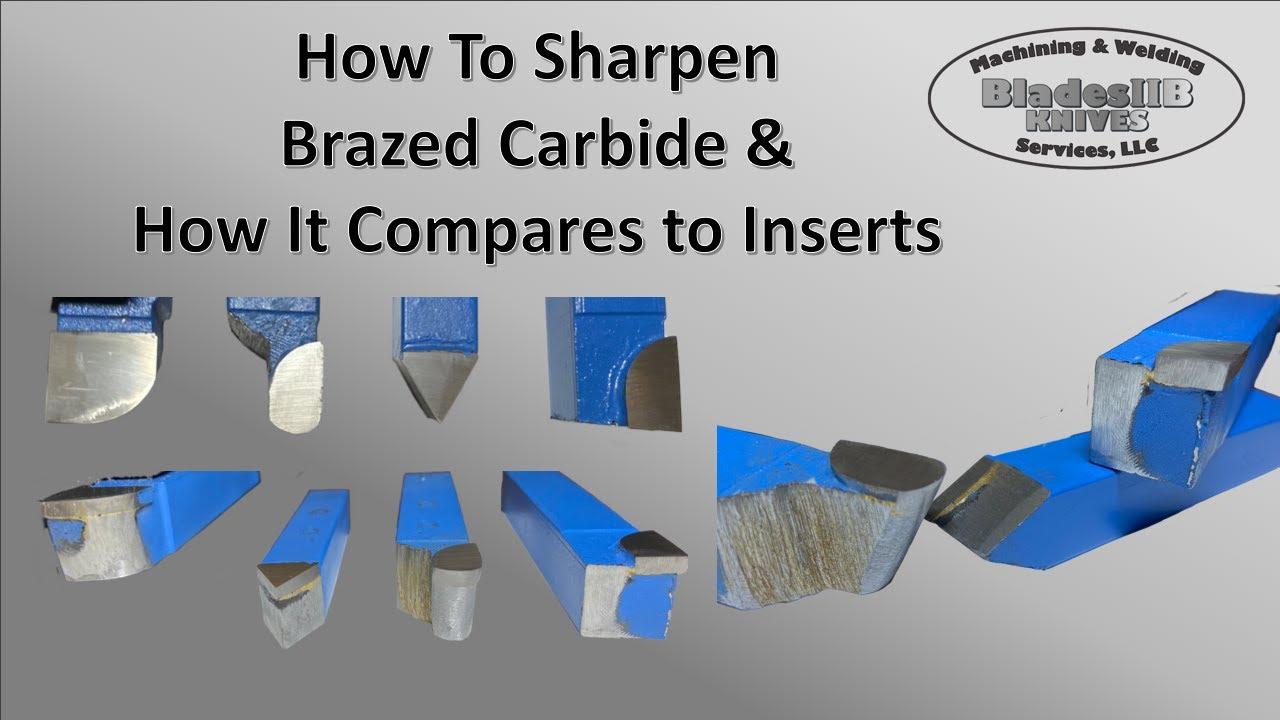Carbide is a hard material that is widely used in the manufacturing industry as a material for cutting tools as well as for other applications. Carbide is also used for other purposes. The capability of carbide tools to withstand higher temperatures at the interface of the cutter and the workpiece is a significant factor in the ability of carbide tools to achieve faster machining.
As the name of the term suggests, a carbide is a compound that contains carbon but also consists of another element. This element is known as the "carbide partner."When it comes to cutting tools, the supplementary component will most frequently be made of tungsten, or more specifically tungsten carbide, or titanium.

Carbide is a type of steel that is utilized in the production of a variety of tools, including blades, bits, and other implements that are utilized in the process of chopping hardwood. Wood cutting tools are typically made of steel, but the material known as tungsten carbide, which is composed of half tungsten and half carbide, has a stiffness that is three times greater than that of steel. Carbide-tipped woodworking tools provide a number of benefits that are not available with equipment that is more traditionally based in the woodworking industry.
An Explanation of the Carbide-Based Tools That Are Employed Most Regularly in Their FieldSolid Carbide End Mill
This particular carbide has an exceptionally high performance and can cut both horizontally and laterally, which means that it can cut in both a downward and across direction. It comes in a wide variety of flutes, lengths, diameters, and types, all of which are determined by the material it will be cutting and the surface finish that must be achieved. The material it will be cutting and the surface finish that must be achieved are both taken into consideration.
End mills are the workhorse tool of the milling industry, and they are utilized in a wide variety of processes, such as slotting, profiling, contouring, counterboring, and reaming. End mills are also known as face mills. This tool is capable of carving precise components for jewelry and machine parts, as well as wood engravings, plastic signs, and molds. Other materials that can be carved include plastic and wood.
Solid carbide tools Center Drill
Utilizing carbide center drill bits makes it possible to accurately center both hard and soft materials on shafts. To achieve this, holes are drilled into the surfaces of the shafts to ensure that the materials are kept between the centers.
These drill bits have a longer and better life than the typical, more commonly used standard drill bits. The drill bit produces a hole in the material in the shape of a circle, and this hole is completely straight. In addition to this, it has spiral grooves along its length called flutes that give it the appearance of being twisted and allow it to cut away material as it travels up and down the hole that it is drilling. The capability of the flutes to remove material in a spiral pattern is what allows this to be accomplished.
Solid Carbide Drill Mill
A Solid carbide cutting tools Drill Mill is a 5-in-1 multi-purpose tool that can be used for a variety of purposes, including milling, drilling, chamfering, spot-milling, and countersinking. These are just some of the functions that can be performed with the Solid carbide tools Drill Mill.
Both the penetration rate and the precision offer the best possible combination of tolerances that can meet IT8 requirements. Neither one of these factors can be compromised. On the other hand, reconditioned solid carbide drills typically have lower prices than brand-new ones do. This is because of the fact that they have been used less.
After being used to drill through a component and then side milling it, a Solid carbide cutting tools Drill Mill is capable of producing a groove or shape on the component it was working on. The fact that this drill can be utilized for a wide range of tasks is one factor that contributes to the high level of popularity that it enjoys in business and manufacturing environments.
Solid Carbide Spade Drill
Drill bits made of solid carbide not only have a high level of strength, but they also have a high level of resistance to wear and heat. Even after being resharpened, the cutting edge on these bits will not lose its precision because their use requires a fixed apparatus, such as a drill press.
Drilling shallow holes (up to twice the diameter) and spotting holes are both possible with a spade bit because it has a very sharp point.
In addition, the construction of the drill bit enables it to bore holes in metal that has been treated to make it more brittle.
The spade drill bit is the tool of choice for framing work, electrical and plumbing work, exceptional woodworking projects, and drilling holes with large diameters. It is also the tool of choice for drilling large diameter holes. The spade drills that are utilized for punching holes through metal on CNC and conventional lathes, milling machines, and machining centers are the carbides that are going to prove to be the most useful for completing this task.
Carbide Inserts or bits
Carbide inserts are the tool of choice for machining non-ferrous metals like steel, carbon, cast iron, and other high-temperature alloys. This is because carbide inserts can withstand higher temperatures. Carbide inserts are available in a wide variety of styles, sizes, and grades, and they can be exchanged and indexed in a number of different ways. Carbide inserts can also be indexed in a number of different ways. Turning, milling, and drilling are some of the applications where this carbide bit can be utilized, and it can be used to cut or crush rocks.
Manufacturers strive to achieve high speeds when working with carbide inserts because this results in more efficient machining and superior finishes. It is absolutely necessary to choose the appropriate carbide insert; failure to do so can result in damage to the piece of work as well as the machine and the insert itself.

